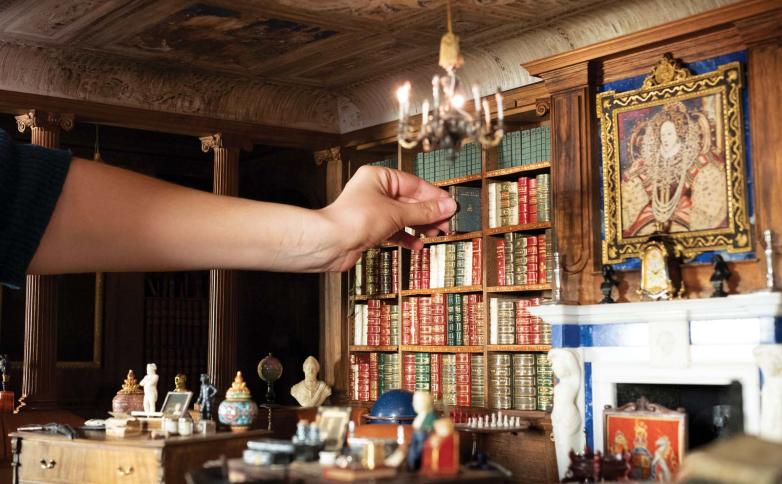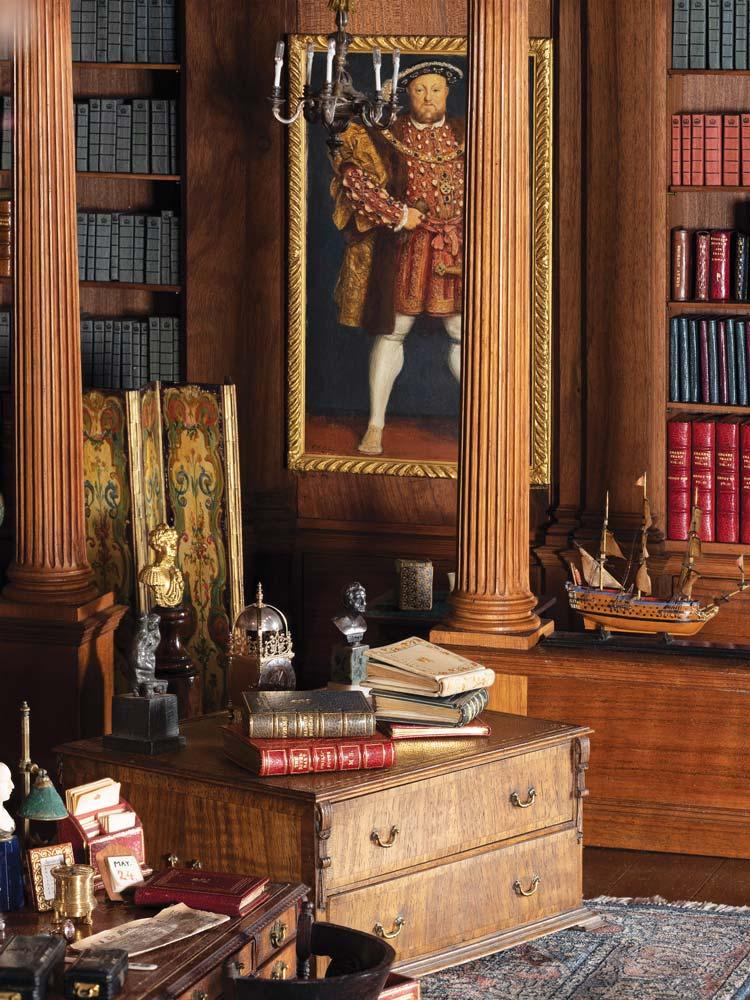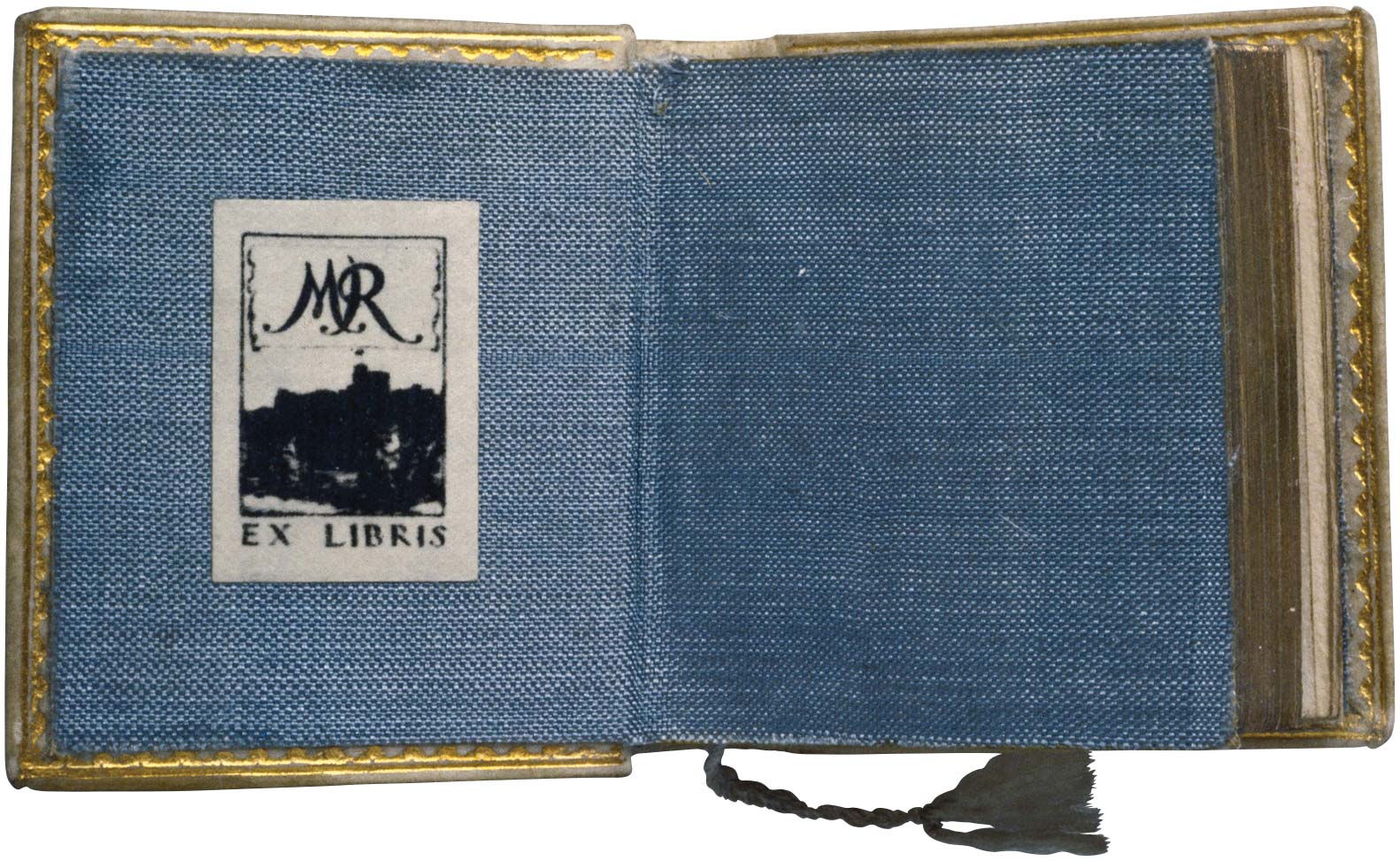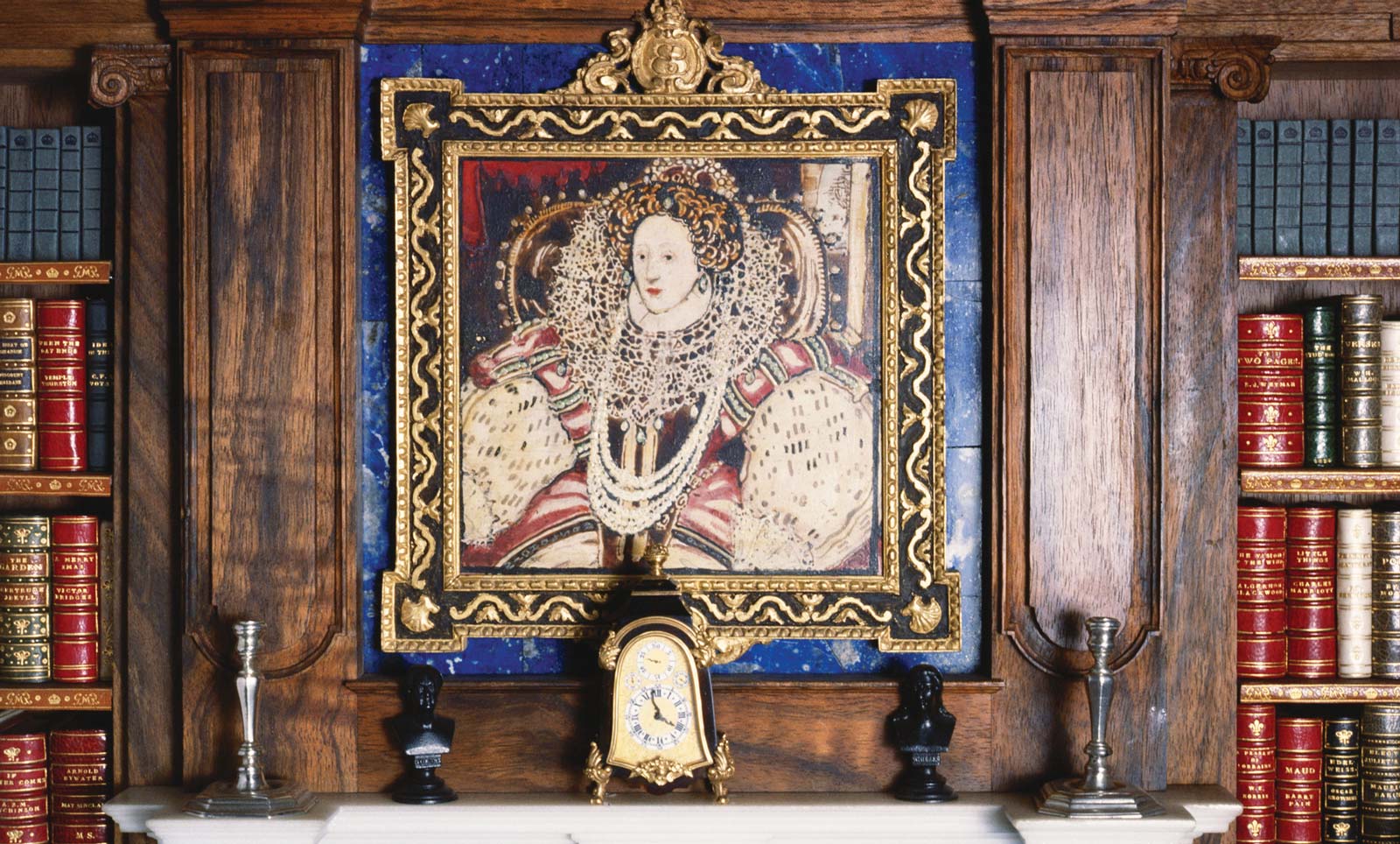As well as a doll-sized leather-top desk, ivory paper knife, leather-upholstered armchairs, and miniature bronze busts of German writers Friedrich Schiller and Johann Wolfgang von Goethe, the library is stocked with 595 miniature books, 176 of which are handwritten manuscripts. These were commissioned by the Princess and her friend, the writer E. V. Lucas, from the country’s leading authors, including Max Beerbohm, A. A. Milne, and J. M. Barrie. Edith Wharton also contributed an original poem, Elves’ Library. The writers were sent four-centimeter-high blank notebooks in which they wrote their contributions. (Rudyard Kipling also decorated his selection of verses with pen-and-ink drawings.) The notebooks were then bound by Sangorski & Sutcliffe, Rivière & Son, Zaehnsdorf, and Birdsall & Son in leather with gold tooling and finished with bookplates designed by E. H. Shepard.
“Fougasse’s J. Smith is perhaps my favorite,” said Ashby of the tiny books. “Fougasse was the pseudonym of writer-cartoonist C. Kenneth Bird, famous for the Careless Talk Costs Lives Second World War posters. His rhyming story is about a fairy who finds himself in London, and both the story and Fougasse’s illustrations are excellent.”
She also noted a Sherlock Holmes story written by Arthur Conan Doyle just for the library. “‘How Watson Learned the Trick’ is an amusing vignette of Dr. Watson trying to make deductions about Holmes and failing,” Ashby said. “And one I am particularly fond of is by Mary C. E. Wemyss, unknown today. Her tale of a mother losing her sons in the First World War is very moving.”
There are also several books about dolls, including Principles of Doll-Surgery by surgeon John Bland-Sutton, as well as M. R. James’s short horror story “The Haunted Dolls’ House,” which is also the longest piece in the library at 5,000 words. (The shortest was provided by philosopher and journalist William Courtney, who offered an eleven-word quote from La Rochefoucauld’s maxims, which took up just one page.)



















